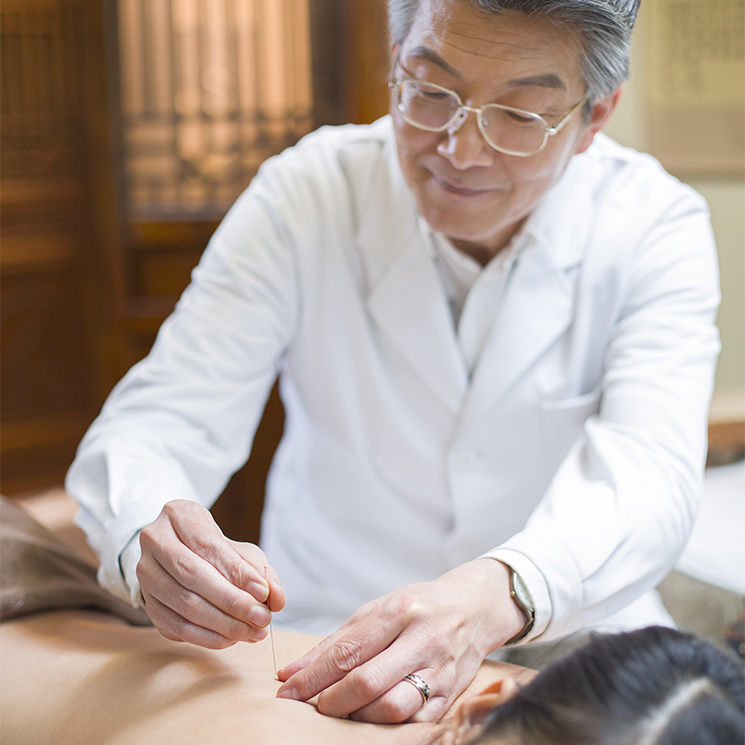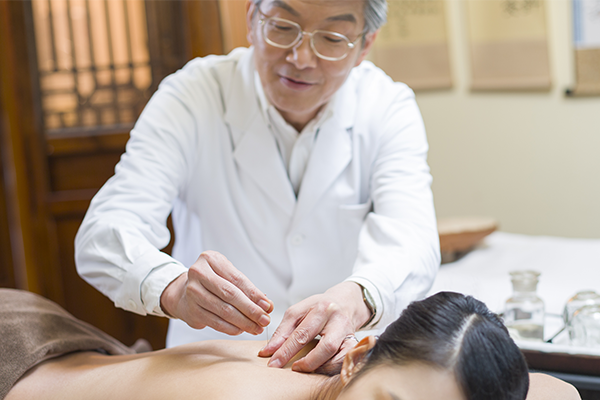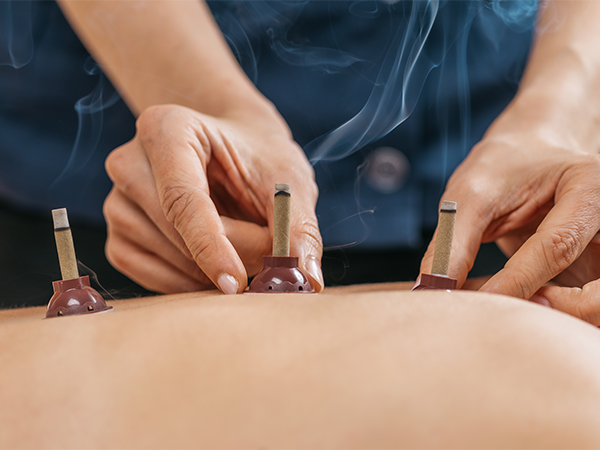
Hello, we are Ingrid, Steve and Naar, three traditional Chinese medicine therapists and acupuncture practitioners. We have created this website to inform you about acupuncture, its indications and benefits.
We came together to create a website that will inform people about the benefits of acupuncture. Ingrid is Franco-German and has been practising acupuncture for over 10 years. Ingrid is a specialist in natural cosmetics and also contributes to the information portal vos-cosmetiques-naturels.com. Steve is from the USA and has been practicing acupuncture for 5 years. Naar is from China and has been practicing acupuncture for over 20 years.
All three of us are passionate about helping you feel your best, and we believe that acupuncture can be a powerful tool in achieving this goal. We are excited to share our knowledge with others and hope that more and more people will appreciate the benefits of this ancient practice.
In its original form, acupuncture was based on the principles of traditional Chinese medicine. Traditional acupuncturists understand health in terms of the life force or energy called "Qi" (pronounced "chee") that flows between the organs along channels called meridians. Qi energy must flow with the correct strength and quality through each of these meridians and organs for health to be maintained. Acupuncture points are located along the meridians and are a means of altering the flow of Qi. Traditional acupuncturists use an Oriental medicine framework to refer to disturbances that are thought to cause symptoms, such as "vacuity of kidney yang, overflow of water" or "damp heat in the bladder".
Many conventional health professionals who practice acupuncture have abandoned these concepts. Acupuncture points are supposed to correspond to physiological and anatomical features such as peripheral nerve junctions, and diagnosis is made in purely conventional terms.

One concept considered important by some practitioners is that of "trigger points" which they believe often correspond to acupuncture points.
This is an area of increased sensitivity within a muscle that is thought to cause a characteristic pattern of referred pain in a related body segment. For example, tender areas in the neck and shoulder muscles are linked to various types of headaches.
It is often suggested that there is a clear distinction between traditional and Western acupuncture, but there is considerable overlap between the two approaches.
Furthermore, traditional acupuncture is not a single historically stable therapy and there is considerable variation between different 'schools' of acupuncture practice. Two acupuncturists treating the same patient may vary in the points chosen, the depth and duration of needling, the method and intensity of needle stimulation, and the use of complementary techniques such as massage or herbal medicine.
Several systematic reviews have evaluated the effectiveness of acupuncture for the treatment of chronic pain (Table 1).
Some systematic reviews examined specific diagnoses, such as headache or back pain, while others included studies of a range of chronic pain conditions. Although the findings of the reviews varied, acupuncture was found to be superior to no treatment or wait-list control in most studies. RCTs comparing acupuncture with a sham technique were more balanced between those that found statistically significant differences between groups and those that did not. Meta-analyses were generally not attempted. Quality is related to the outcome of the study, with lower quality studies being more likely to favour acupuncture.
A number of other RCTs have subsequently been published that have not yet been systematically reviewed. These RCTs are of variable quality and also provide conflicting evidence of the effectiveness of acupuncture for a range of chronic pain conditions. Tables providing more detail on each of these trials are available on the Centres for Reviews and Dissemination (CRD) website (www.york.ac.uk/inst/crd/ehcb.htm).
Advocates of acupuncture have pointed to the results of several high quality studies that have shown statistically and clinically significant differences between acupuncture and sham. However, each of these results should not be considered in isolation from the larger body of evidence on chronic pain.
Acupuncture is widely promoted as an aid to smoking cessation. A systematic review of 21 trials suggests that, at best, acupuncture may have a slight advantage over a sham acupuncture procedure for short-term abstinence rates. Acupuncture is no more effective than placebo techniques for long-term abstinence. Drop-out rates for acupuncture appear to be slightly lower than for nicotine replacement therapy.
Acupuncture has been used to treat cocaine dependence in several hundred drug treatment programmes in the USA. Several RCTs have been conducted, but they have not been systematically reviewed. Acupuncture is favoured in some analyses, but some RCTs have been complicated by multiple statistical comparisons: this increases the likelihood of a false positive result. The most rigorous RCT reported that patients assigned to acupuncture were significantly more likely to provide cocaine-negative urine samples, the prespecified primary outcome measure, than those in the control and sham acupuncture groups.
No systematic reviews evaluating the use of acupuncture for alcoholism or opioid dependence were identified. The number, size, quality and strength of evidence from RCTs studying acupuncture for alcoholism and opioid dependence are insufficient to guide clinical decisions.
Systematic reviews of acupuncture for asthma have concluded that there is little evidence on which to base clinical decisions. A number of the included RCTs examined acupuncture for asthma and chronic obstructive pulmonary disease. The RCTs were heterogeneous in terms of patients, acupuncture techniques, outcome measures and controls.
They are also small, with a median sample size of 25; the largest RCT had only 39 patients. Some RCTs used induced asthma models to allow good experimental control. Although they appear to show a physiological benefit of acupuncture on lung function, these studies have not been replicated and provide only limited insight into the clinical utility of acupuncture for asthma. Two small randomised controlled trials have recently been published which also provide limited information on the clinical effectiveness of acupuncture in the treatment of asthma.
Two systematic reviews examined acupuncture for nausea and vomiting. The first included RCTs on nausea related to surgery, pregnancy and chemotherapy. Although acupuncture is not an effective technique when given under anaesthesia, it was superior to a sham technique in 11 of the 12 studies considered to be of high quality. The RCTs reviewed showed consistent results between different investigators, different patient groups and different forms of acupuncture point stimulation. Allocation concealment was not considered in the quality assessment and two studies with unconcealed allocation were included in the main analysis. The second analysis, which focused on postoperative emesis, improved the original analysis by excluding studies with unconcealed allocation and reported a meta-analysis. Data from 19 studies including 1679 patients were analysed. Acupuncture reduced both nausea (relative risk compared with placebo control 0.4; 95% CI 0.2 to 0.7; five RCTs) and vomiting (relative risk compared with placebo control 0.5; 95% CI 0.35 to 0.65; eight RCTs) in adults in the immediate postoperative period. These results were reasonably robust to sensitivity analyses of study size and quality. Of four other RCTs on postoperative vomiting, two reported a decrease in nausea and vomiting95 96 and two reported no difference between acupuncture, acupressure and sham treatment. For chemotherapy-related nausea, one of the findings of the first review was that the data were weaker for this indication than for postoperative vomiting.93 A subsequent high-quality RCT (n=104) that included a hidden allowance, sham control and careful blinding found clinically and statistically significant differences in vomiting between acupuncture and control. Another small trial of 17 women undergoing chemotherapy for breast cancer found a significant decrease in nausea in the acupressure group.
For pregnancy-related nausea, the first study indicated that acupuncture could have a prophylactic effect, but there were no data on acupuncture for the treatment of severe vomiting. More recently, a randomised, blinded, crossover trial of 33 pregnant women with hyperemesis reported significant clinical improvements with acupuncture and statistically significant differences between acupuncture and sham. Another RCT (n=55) found no effect of acupuncture on pregnancy-related nausea. A small number of paediatric studies reported in the subsequent review found no differences between acupuncture and control.
Two subsequent double-blind, sham-controlled RCTs used acupuncture points specifically chosen for the paediatric population. Both RCTs included a combined total of 115 children and found similar results; vomiting rates within 24 hours of surgery were about 20% in acupuncture patients, compared with about 60% in controls. Three other RCTs (including a combined total of 224 children) investigated stimulation of the P6 acupuncture point. Two of these three trials found no effect of acupuncture on postoperative vomiting. The third trial found a significant decrease in vomiting in children who received laser acupuncture.
Serious adverse events, including pneumothorax, spinal injury, and hepatitis B transmission, have been reported in the literature, but they are rare and are usually associated with unlicensed and poorly trained acupuncturists. A systematic review of prospective studies on the safety of acupuncture found only two cases of pneumothorax and two cases of broken needles in a quarter of a million treatments. A prospective study of Japanese acupuncture practitioners recorded only 94 minor adverse events, the most common being forgotten needles and discomfort, but no serious adverse events in 65,000 treatments. A study of Swedish physiotherapists practising acupuncture prospectively recorded side effects during more than 9000 episodes of care. Although minor bleeding or bruising was reported after almost one in five treatments, other minor side effects such as fatigue or sweating were rare. No serious complications were noted.
More recently, a UK study involving 574 acupuncturists reported adverse events and treatment reactions associated with 34,407 treatments. No serious adverse events were reported, although there were 43 minor adverse events, about a quarter of which involved severe nausea and fainting. In addition, a recent prospective survey in the UK of 31,822 consultations with 78 doctors and physiotherapists practising acupuncture reported a rate of 14 minor but significant adverse events (such as headache or fainting) per 10,000 acupuncture consultations.
Chinese Medicine (TCM). It is the study of meridians and collaterals, acupoints, acupuncture techniques, and the laws of disease prevention and treatment by acupuncture-moxibustion. Thousands of years ago, ancient Chinese medicine used the bian stone (needle stone) as an instrument to treat diseases, then discovered the points and invented special acupuncture instruments. Gradually, the "theory of meridians and collaterals", a treatment system rich in both practice and theory, was founded, and has been applied worldwide. For thousands of years, acupuncture-moxibustion has contributed enormously to the growth and health of the Chinese population. Today, even with the rapid development of medical science, it is regarded as an important part of Chinese cultural heritage.
Since the founding of the new China, the science of acupuncture-moxibustion has developed rapidly with the attention and support of the government.
Many studies have been conducted, especially on the functional mechanism of acupuncture-moxibustion, which has given it a leading role in the modernization of TCM.

Research on the mechanism of acupuncture analgesia has revealed some areas of the functional mechanism of acupuncture. These achievements have been internationally recognised in academic circles, and thus China enjoys a pre-eminent position in this field. In the 1950s, scientific research on acupuncture-moxibustion focused on publishing and popularising the basic knowledge of this science and summarising the clinical practice of acupuncture-moxibustion in general. In the 1960s, the on acupuncture-moxibustion and acupuncture anaesthesia. acupuncture anaesthesia was conducted.
In the 1970s, many organized studies were undertaken on the clinical applications and principles of acupuncture anesthesia and the mechanism of acupuncture analgesia. In the 1980s, research on the clinical applications and principles of acupuncture-moxibustion and acupuncture anaesthesia as well as research on meridians and collaterals. were gathered in an organised and planned manner. In November 1987, the World Foundation of Acupuncture-Moxibustion Societies (WFAS) was established in China, with its headquarters in Beijing. Professor Hu Ximin from China was elected president of the first WFAS conference.
.In the 1990s, the science of acupuncture-moxibustion left China for the outside world. China to the outside world and combined with modern science, becoming an inseparable component of the medical science of the world medical science. Since the 1980s, the basic theory of acupuncture and moxibustion includes "Meridian and collateral research" in the special part of the theory. meridian and collateral" in the special plan of all the special plan of all the major research projects of the State (State Climbing Plan).
.Thanks to the research conducted in the last half century, the science of acupuncture-moxibustion has taken the lead in the modernization of TCM.
Gong CZ, Liu W. Two Evidence-Based Acupuncture Models. Chin J Integr Med. 2020 Jan;26(1):3-7. doi: 10.1007/s11655-019-3177-5. Epub 2019 Nov 9. PMID: 31705449.
Sierpina VS, Frenkel MA. Acupuncture: a clinical review. South Med J. 2005 Mar;98(3):330-7. doi: 10.1097/01.SMJ.0000140834.30654.0F. PMID: 15813160.
Sun R, Yang J. [Application and inheritance of moxibustion in modern acupuncture-moxibustion school]. Zhongguo Zhen Jiu. 2021 Jun 12;41(6):641-4. Chinese. doi: 10.13703/j.0255-2930.20201016-k0010. PMID: 34085481.
Stux G., Berman B., Pomeranz B. Basics of Acupuncture, 5th Edition. Read the book online, 2008 Mai.